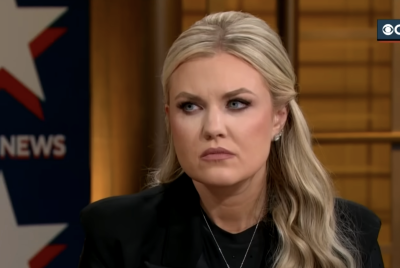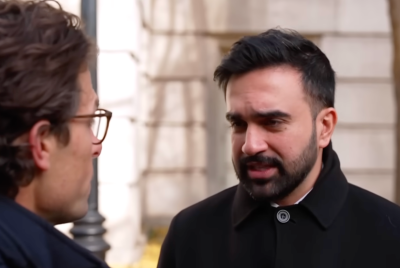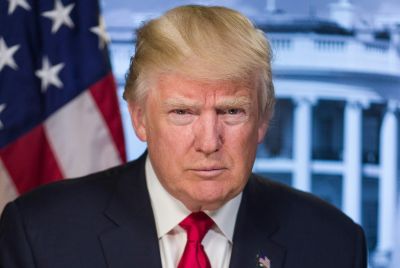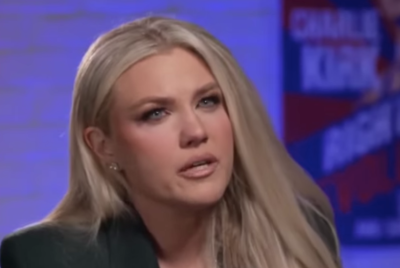Hillary Clinton had an inspiring message - but would you look at her make-up!
This is the perfect example of the double standards that dogged Clinton throughout her campaign.

Hillary Clinton was allowed all of one week after the greatest political defeat of her career before the frenzy of media scrutiny returned: not to pore over the details of her first post-election speech, or to debate the significance of its message, but to go into a collective meltdown about her lack of make-up.
Clinton actually looks very similar to her normal self - indeed, the look that has been so feverishly vaunted as 'make-up free' actually clearly includes lipstick and possibly some mascara. The hair that has been described so dramatically as "noticeably untamed" and "unkempt" is in fact slightly less volumised than usual, whilst remaining neatly brushed, in a very similar style. Is it really worthy of a thousand headlines that Clinton seemed to be wearing slightly less foundation than normal and perhaps had vaguely flatter hair?
It seems likely that many outlets have deliberately used photographs that amplify the perceived difference, making Clinton look as over-exposed and haggard as possible through unflattering lighting and sharp focus. In the coverage that doesn't dwell exclusively on her face, there is a far less dramatic contrast from her usual appearance.
Surely, rather than any dramatic and deliberate statement, it's much more likely that the slight change in appearance was explained by the fact that she has had the toughest week of her life, as Clinton herself explained in her speech, had anybody actually been focusing on what she was saying instead of what she looked like.
Wouldn't any one of us, on emerging from the nightmare of losing the presidency to a bright orange, misogynistic, Islamophobic bigot with zero political experience, perhaps be looking very slightly the worse for wear?
Media misinterpretation
Yet this fairly obvious explanation was not enough to stem the tide of faux media shock, with Clinton's appearance positioned as evidence of her "crushing election defeat", with "stress" and "anxiety" touted as potential factors.
A candid photograph of Clinton taken by a hiker who came across her walking her dogs is also dragged into the fray, as if further significant revelations about Clinton's mental state can be wrung out of the unsurprising fact that she wasn't wearing a full face of make-up whilst out on a family stroll.
What's most depressing is that Clinton had so much to say in the speech, which focused on child poverty, and the importance of jobs, affordable healthcare and childcare in tackling the problem. She also had a deeply inspiring message for those who were disappointed by the outcome of the election, urging perseverance and engagement, and asking her supporters to continue to "fight for our values and never, ever give up".
How ironic that a speech so full of fire and hope, in which Clinton explicitly cited the examples of many incredible pioneers in social justice and declares that "if they can persevere, so must all of us", has been interpreted and presented by sections of the media as the howl of pain of a broken and defeated women. All because of a centimetre or two less lift in the hair.
Instead of a detailed analysis of her speech and its implications, we have been treated to an itemised comparison of the minutiae of Clinton's actual or imagined beauty regime, from the precise shade of her election campaign lipstick to laser scrutiny of her skin's post-election "puffier appearance".
Same old double standards
This is, of course, the perfect example of the double standards that dogged Clinton throughout her campaign, and doubtless would have continued to do so during her presidency had she won the election. Actual statements are spun through the lens of appearance and societal judgement. A slightly different look that would have gone completely unremarked upon in the case of a male candidate is instead held up as proof of this or that emotion, or state of mind. An entire identity is constructed out of assumptions about appearance instead of character and action, as exemplified in the headline: "What happened to the campaign trail's cuddly Granny Clinton?"
Statements like: "However, now that she is no longer relying on the support from the public Mrs Clinton's style seems to be less of the friendly and approachable mother-figure and one of a sterner minded woman" betray the notion that Clinton's very mindset is apparently discernible from her hair and make-up.
Surely - after the political depth of a presidential campaign, after the years of service as Secretary of State and the hundreds of countries visited, after the thousands of intellectual speeches she has given - surely, it is time to stop talking about Clinton's make-up, or lack thereof? She has missed out on shattering the glass ceiling she aimed for, lost the biggest challenge of her career to a man infinitely less qualified than her, and faced innumerable sexist attacks in the process.
Couldn't we at least do her the small courtesy of judging her, from hereon in, on what she says and does, instead of what she looks like?
Laura Bates is the founder of the Everyday Sexism Project
© Copyright IBTimes 2025. All rights reserved.






















